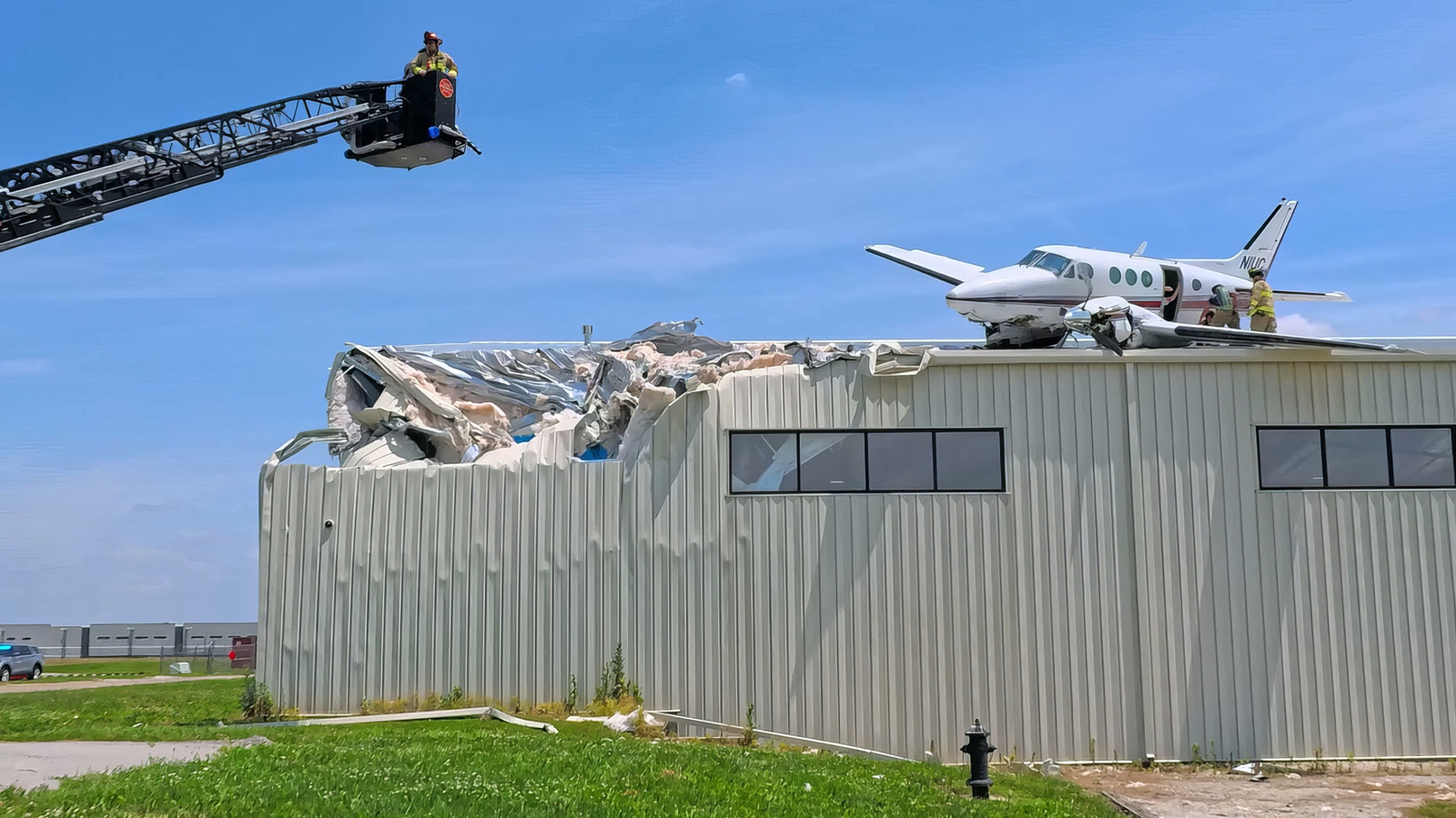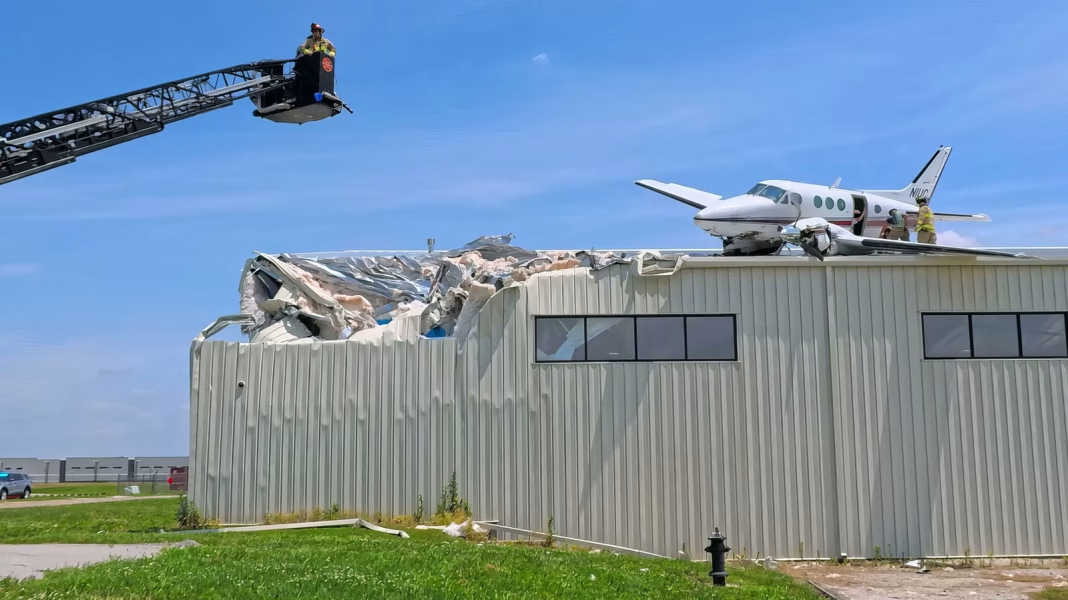First responders acted swiftly on Monday when a small plane crashed onto the roof of a hangar at a public airport just outside Kansas City. The incident, which could have turned disastrous, ended with two individuals being rescued from the wreckage.
What Happened During the Crash?
Eyewitnesses reported seeing the plane struggling in the air before it made a sudden descent, landing atop the hangar. The aircraft, a turboprop, appeared to be experiencing mechanical issues, leading to its emergency landing. Fortunately, the quick response from local emergency services ensured that both occupants were safely extracted from the plane without serious injuries.
The Rescue Operation
First responders arrived on the scene within minutes, showcasing their training and preparedness for such emergencies. Firefighters and paramedics worked together to assess the situation, ensuring the safety of the victims while also considering the structural integrity of the hangar. They used specialized equipment to reach the stranded individuals, demonstrating the importance of teamwork in crisis situations.
Why This Incident Matters
While the immediate outcome was positive, this incident raises questions about aviation safety, especially for small aircraft. According to the National Transportation Safety Board (NTSB), small plane accidents can often be attributed to mechanical failures or pilot error. This crash serves as a reminder of the inherent risks associated with flying, even in seemingly routine situations.
The Role of Emergency Services
This event also highlights the critical role of emergency services in ensuring public safety. Their rapid response not only saved lives but also prevented what could have been a more catastrophic scenario. Training and preparedness are essential in these situations, and the successful rescue operation underscores the importance of having well-equipped and well-trained first responders ready to tackle emergencies at a moment’s notice.
Looking Ahead: Aviation Safety Measures
In light of this incident, it’s worth considering what measures can be taken to enhance safety in small aviation. Regular maintenance checks, pilot training, and adherence to safety protocols are vital. Additionally, airports can benefit from improved emergency response plans that involve coordination between aviation authorities and local emergency services.
The big takeaway? This incident isn’t just about a plane crash; it’s about the importance of preparedness and safety in aviation. Whether you’re a pilot, a passenger, or just someone who enjoys watching planes take off and land, understanding these dynamics can make a difference. So, let’s keep the conversation going about aviation safety, and who knows? One small change in awareness or protocol could lead to a safer flying experience for everyone.


